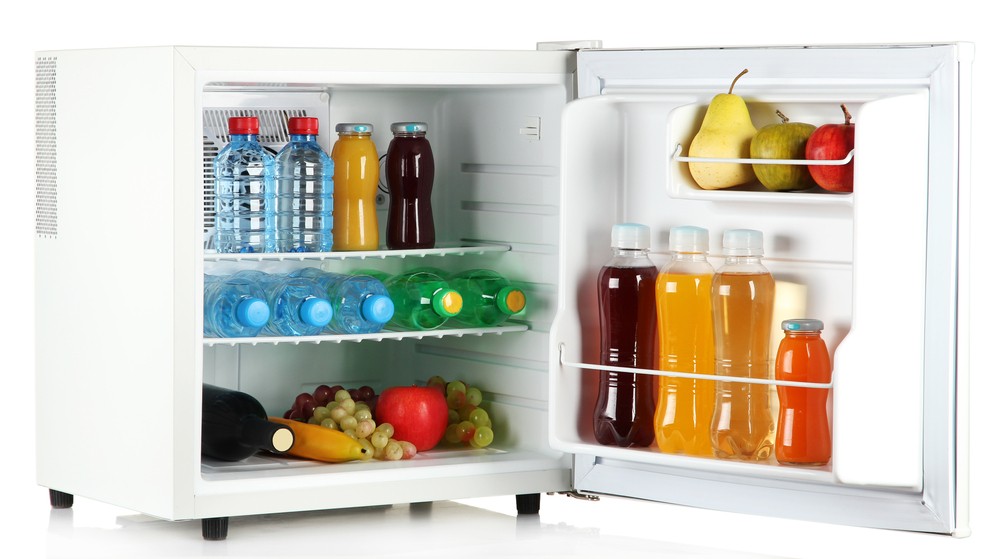Mini fridge electricity use hinges on size, wattage, and frequency of opening and closing. A website offering a calculator for mini fridge power consumption states that a 115-liter (4 Cu.ft) 80-watt mini fridge operating 24 hours daily consumes about 0.64 kWh of electricity. Consequently, the daily cost in India is approximately ₹5.12, given an average electricity tariff of ₹8 per kWh.
While electricity consumption for mini fridges is consistent between India and the USA, costs differ based on state and tariff. A website presenting average electricity prices by the state indicates the national average price for residential customers in January 2023 was 13.55 cents per kWh. Therefore, the daily cost to run a mini fridge in the USA is about $0.09, assuming an average tariff of 13.55 cents per kWh.
Understanding Energy Consumption of Mini Fridges
Mini fridges boast a compact, efficient design perfect for limited spaces. Despite this, they may consume considerable electricity. Energy consumption hinges on various factors, explored in the subsequent section.
Factors Influencing Mini Fridge Energy Consumption
Size and Capacity
The mini fridge’s dimensions and volume influence energy use. Typically, bigger fridges demand increased energy for desired temperature maintenance. Thus, a more substantial mini fridge utilizes greater electricity compared to a smaller counterpart.
Cooling Technology
Two main cooling technology types are used in mini fridges: compressor-based and thermoelectric. Compressor-based fridges tend to be more energy-efficient, while thermoelectric fridges are typically less efficient but quieter.
Age and Efficiency
Older mini fridges are likely to be less energy-efficient than newer models, as technology and energy standards have improved over time. Upgrading to a newer, more efficient model can save you money on electricity bills in the long run.
Temperature Settings
The temperature settings you choose for your mini fridge will impact its energy consumption. Lower temperature settings require more energy to maintain, while higher settings use less energy.
Location and Environment
The surrounding environment can also influence a mini fridge’s energy consumption. Placing the fridge in a hot, poorly ventilated area will cause it to work harder to maintain its temperature, increasing energy usage.
How to Estimate Mini Fridge Energy Usage
Checking the Energy Guide Label
Most mini fridges come with an Energy Guide label, which provides an estimated annual energy consumption based on typical usage. This label can give you a rough idea of how much electricity your mini fridge will use.
Calculating Energy Consumption
To calculate your mini fridge’s energy consumption, you can multiply its power rating (in watts) by the number of hours it operates per day and divide by 1,000 to convert to kilowatt-hours (kWh). Then, multiply this by the number of days per year to estimate annual energy usage.
Using a Wattmeter
A wattmeter can help you measure the actual power consumption of your mini fridge. Simply plug the mini
fridge into the wattmeter, and then plug the wattmeter into the wall outlet. The wattmeter will display the real-time power consumption in watts, allowing you to monitor your mini fridge’s energy usage more accurately.
Energy Saving Tips for Your Mini Fridge
Proper Maintenance
Regularly cleaning and maintaining your mini fridge can help reduce its energy consumption. Ensure the door seals are in good condition, and defrost the fridge if ice buildup occurs.
Optimal Temperature Settings
Selecting the appropriate temperature settings for your mini fridge can save energy. The recommended temperature range for most mini fridges is between 35°F and 40°F (2°C and 4°C).
Strategic Placement
Place your mini fridge in a cool, well-ventilated area to minimize its energy consumption. Keep it away from direct sunlight, heat-producing appliances, and vents.
Comparing Mini Fridges and Full-Size Refrigerators
Though mini fridges usually have better energy efficiency per cubic foot compared to full-size refrigerators, the optimal choice depends on individual requirements. For those needing increased storage, a full-size refrigerator could prove more energy efficient in total, keeping a bigger food quantity at a stable temperature.
Conclusion
The energy consumption of a mini fridge depends on various factors such as size, cooling technology, age, temperature settings, and location. By understanding these factors and employing energy-saving tips, you can minimize your mini fridge’s electricity usage. When choosing between a mini fridge and a full-size refrigerator, consider your storage needs and the potential energy efficiency of each option.
Frequently Asked Questions
How much does it cost to run a mini fridge per month?
The cost of running a mini fridge depends on its energy consumption, your local electricity rates, and the amount of time it’s in use. Calculate the fridge’s monthly energy consumption in kWh and multiply it by your electricity rate to estimate the cost.
Is it better to unplug a mini fridge when not in use?
Yes, unplugging a mini fridge when it’s not in use can save energy and reduce your electricity bill. However, remember to empty and clean the fridge before unplugging it to prevent mold and unpleasant odors.
Do mini fridges use more electricity than full-size refrigerators?
Mini fridges generally use less total electricity than full-size refrigerators. However, they may consume more energy per cubic foot of storage space. Consider your storage needs and energy efficiency when choosing between a mini fridge and a full-size refrigerator.
How can I make my mini fridge more energy-efficient?
To make your mini fridge more energy-efficient, maintain proper temperature settings, clean and maintain it regularly, and position it in a cool, well-ventilated area away from heat sources.
What is the most energy-efficient type of mini fridge?
Compressor-based mini fridges are usually more energy-efficient than thermoelectric models. Look for mini fridges with high energy efficiency ratings or ENERGY STAR certification to ensure you’re choosing a more eco-friendly option.



